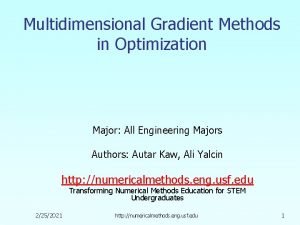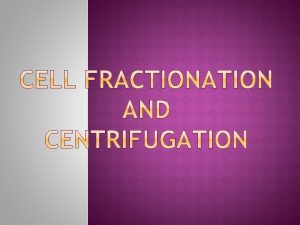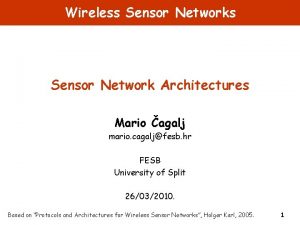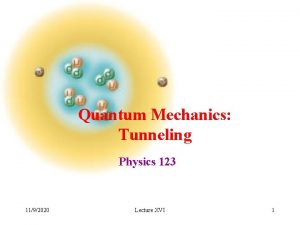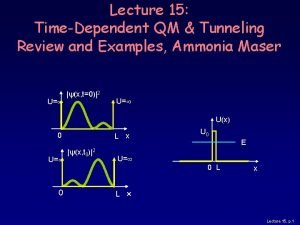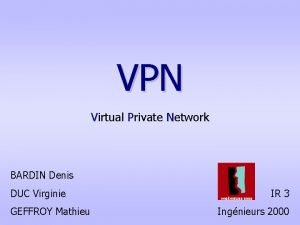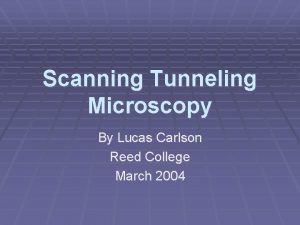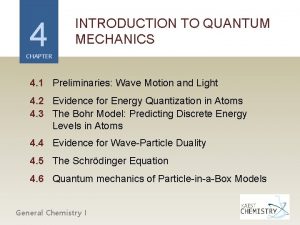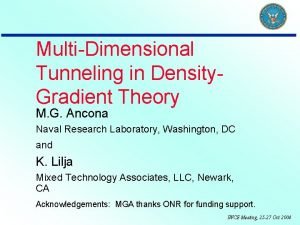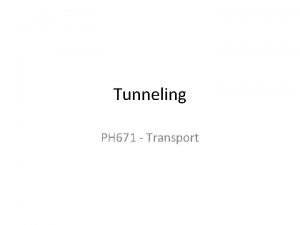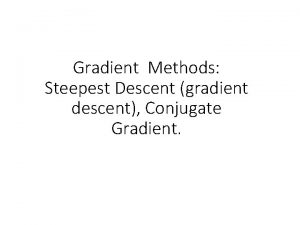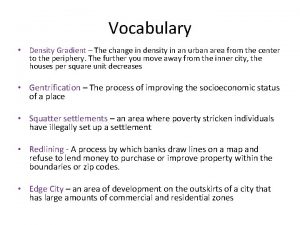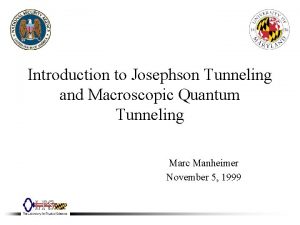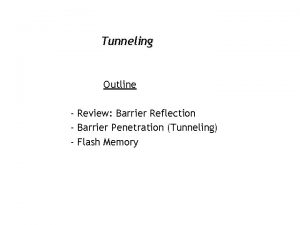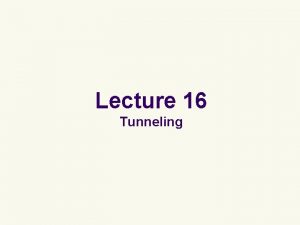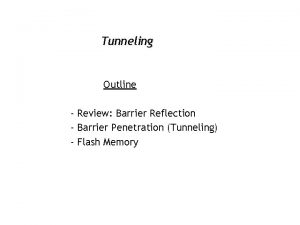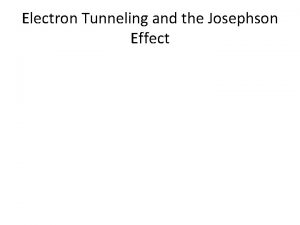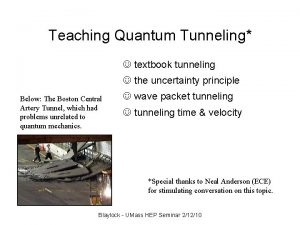MultiDimensional Tunneling in Density Gradient Theory M G













- Slides: 13

Multi-Dimensional Tunneling in Density. Gradient Theory M. G. Ancona Naval Research Laboratory, Washington, DC and K. Lilja Mixed Technology Associates, LLC, Newark, CA Acknowledgements: MGA thanks ONR for funding support. IWCE Meeting, 25 -27 Oct 2004

Introduction Density-gradient (DG) theory is widely used to analyze quantum confinement effects in devices. Implemented in commercial codes from Synopsis, Silvaco and ISE. Similar use of DG theory for tunneling problems has not occurred. Why? Issues of principle (including is it possible? ). Unclear how to handle multi-dimensions. Purpose of this talk: DG theory of tunneling and how to apply it in multi-dimensions. IWCE Meeting, 25 -27 Oct 2004

Some Basics DG theory is a continuum description that provides an approximate treatment of quantum transport. Not microscopic and not equivalent to quantum mechanics so much is lost, e. g. , interference, entanglement, Coulomb blockade, etc. Foundational assumption: The electron and hole gases can be treated as continuous media governed by classical field theory. Continuum assumption often OK even in ultra-small devices: Long mean free path doesn't necessarily mean low density. Long de. Broglie l means carrier gases are probability density fluids. Apparent paradox: How can a classical theory describe quantum transport? A brief answer: IWCE Meeting, 25 -27 Oct 2004 DG theory is only macroscopically classical.

Density-Gradient Theory DG theory approximates quantum non-locality by making the electron gas equation of state depend on both n and grad(n): where Form of DG equations depends on importance of scattering just as with classical transport: Continuum theory of classical transport quantum transport With scatterin g No scatterin DD theory Ballistic transport DG quantum confinement DG quantum. IWCE tunneling Meeting, 25 -27 Oct 2004

Electron Transport PDEs General form of PDEs describing macroscopic electron transport: negligible gen/recomb Charge/mass conservation: Momentum conservation: Electrostatics: inertia negligible Density. Diffusion-Drift Ballistic Gradient(ballistic Transport regime) (scattering-dominated) negligible scattering Thesewith equations describe quantum with tunneling through IWCE Meeting, 25 -27 Oct 2004 barriers.

PDEs for DG Tunneling Transformations of the DG equations: Convert from gas pressures to chemical potentials. Introduce a velocity potential defined by Governing equations in steady-state: where IWCE Meeting, 25 -27 Oct 2004

Boundary Conditions Lack of scattering implies infinite mobility plus a lack of mixing of carriers. => Carriers injected from different electrodes must be modeled separately. => Different physics at upstream/downstream contacts represented by different BCs. Upstream conditions are continuity of Downstream conditions are continuity of y and Jn plus "tunneling recombination velocity" conditions: where vtrv is a measure of the density of final states. IWCE Meeting, 25 -27 Oct 2004

DG Tunneling in 1 D Ancona, Phys. Rev. B (1990) MI M Ancona et al, IEEE Trans. Elect. Dev. (2000) MOS Ancona, unpublishe d (2002) THB T IWCE Meeting, 25 -27 Oct 2004

DG Tunneling in Multi. DTest case: STM problem, either a 2 D ridge or a 3 D tip. That electrodes are metal implies: Can ignore band-bending in contacts (ideal metal assumption). High density means strong gradients and space charge effects. Goal here is illustration and qualitative behavior, so ignore complexities of metals. Solve the equations using PROPHET, a powerful PDE solver based on a scripting language (written by Rafferty and Smith at Bell Labs). IWCE Meeting, 25 -27 Oct 2004

Solution Profiles Densities are exponential and current is appropriately concentrated at the STM tip. 2 D simulations IWCE Meeting, 25 -27 Oct 2004

I-V Characteristics Current is exponential with strong dependence on curvature. Asymmetrical geometry produces asymmetric I-V as Illustration: Estimate tip convolution --- the loss in STM resolution due to finite radius of curvature. IWCE Meeting, 25 -27 Oct 2004

DG Tunneling in 3 -D Main new issue in 3 D is efficiency -- DG approach even more advantageous. As expected, asymmetry effect even stronger with 3 D tip. IWCE Meeting, 25 -27 Oct 2004

Final Remarks Application of DG theory to MIM tunneling in multidimensions has been discussed and illustrated. Qualitatively the results are encouraging, but quantitatively less sure. DG confinement reasonably well verified in 1 D and multi. D. Much less work done verifying DG tunneling and all in 1 D. Many interesting problems remain, e. g. , gate current in an operating MOSFET. Main question for the future: Can DG tunneling theory follow DG confinement in becoming an engineering tool? Need to address theoretical, practical and numerical issues. IWCE Meeting, 25 -27 Oct 2004
